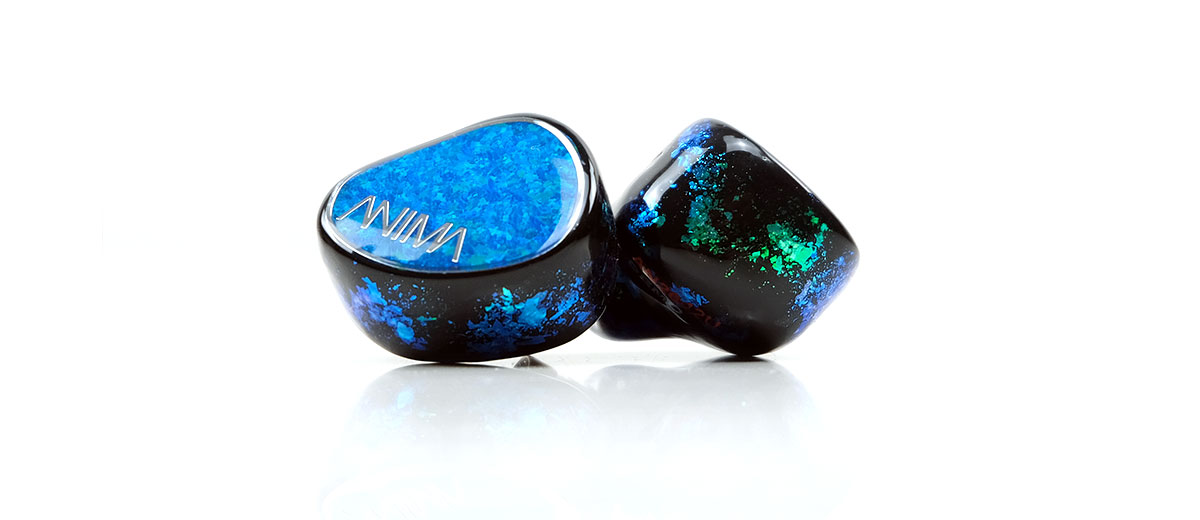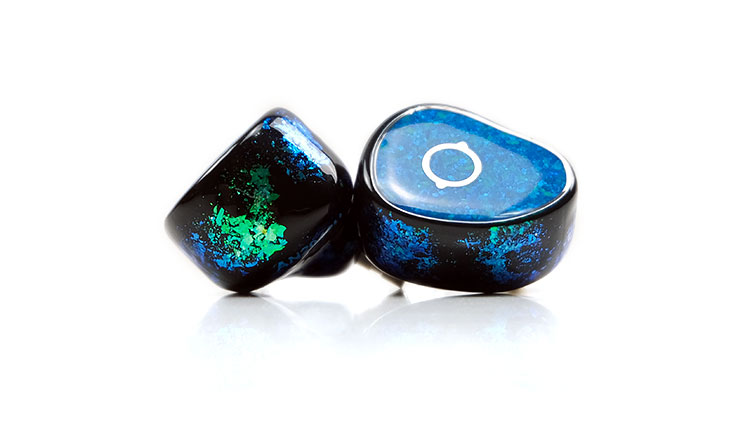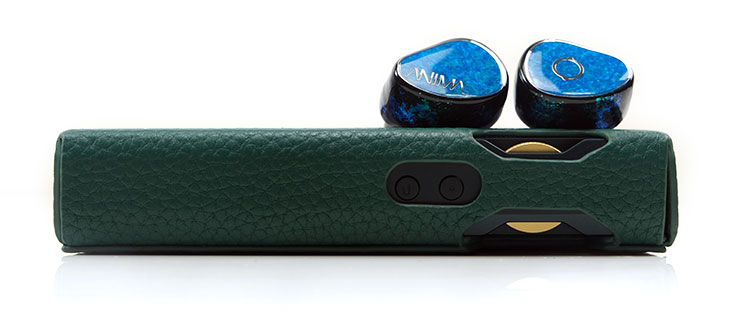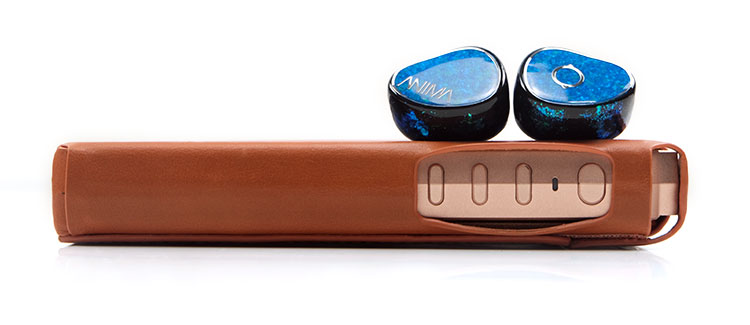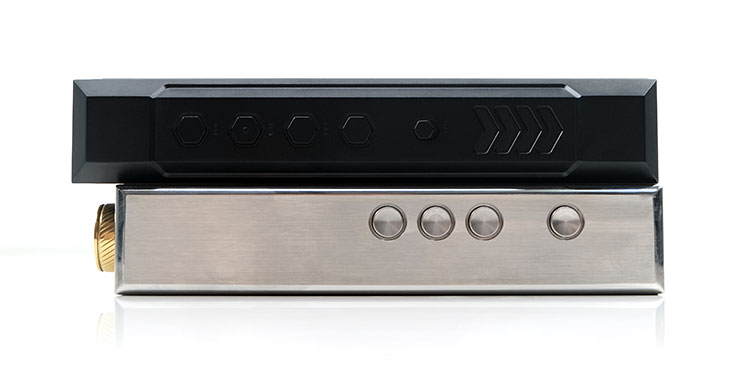Sound Impressions
All impressions were completed using SpinFit CP145 and Final E tips as well as sources including a Luxury & Precision P6 Pro, a HiBy RS6, and a FiiO M17.
Summary
The Anima belongs in the big leagues with a sound signature that is unique to the Lime Ears house tuning in many ways, but also with the technical chops that are not too far off big names like the Odin and the EXT.
Those coming from the previous flagship, the Pneuma, will definitely pick up in the Anima’s more spacious staging quality and improved dynamic range. There is more contrast in the Anima tonal qualities compared to the original but in return, the Anima goes much deeper, far wider, and with a hell of a lot more resolution and headroom for everything to breathe and shine.
Like most Lime Ears creations the Anima has less of an emphasis on reference-style tuning and aims more for ‘high-end exuberance’ with a contrast of power in the lows and a more delicate sweetness through the nifty and articulate mids and highs.
There is some coloration in the bass response and a forwards vocal image but it’s not overcooked with the choice of tips being a big factor in how much of that low-end presence comes through. You can read in more detail the performance of the tested tips lower down but if you want the best bass performance out of the Anima then I do suggest opting for the Final E tips.
The Anima will need a quality amp behind it though to maximize its potential. Nothing desktop-grade, but weaker sources will struggle to get those e-stats and the dynamic driver moving. Compared to other e-stat infused monitors such as the EXT and the Odin, the Anima will require a few dB more gain to hit similar volume levels.
Frequency Response
The Anima has a loose W-shaped response curve with a strong but not overwhelming bass presence and a more neutral to slightly dipped lower-mids up to 500Hz. From there the curve starts rising and accumulates in a forward 1-3k range that brings vocals and some percussion to the fore.
The bass curve does have a sub-bass bias but the combination with the BA sub-woofers from 40Hz to around 102Hz brings a fairly different quality to its response.
You can hear the sub-bass hit like a quality dynamic driver but the mid-bass punch is fast and clean sounding with decent warmth. so, despite the neutral lower-mids does sound a little warmer and smoother through the same region compared to the likes of the Odin and less bloom in the upper bass compared to the EXT.
Unlike the likes of the EXT and the Odin, the Anima drops the 4-6k presence region and instead focuses on a rising 7-10k curve with more emphasis on delivering the best e-stat performance from there beyond. There is no 10k roll-off with the Anima so for those who like a bit of delicate sparkle and ethereal shimmer then this delivers plenty of that.
Timbre
The Anima fuses dynamic driver power at the very low-end with those cleaner and faster sounding BA through the upper bass and mids. Then finally, a very light smattering of e-state timbre on the upper treble overtones.
It’s probably the bass response that you will find the most topical. It is not an ‘always on’ type of performance where every single note has incredible richness and heft. In fact, take away those low-end drivers and the sound is quite delicate, clean, and light sounding.
When the Anima low-end hits though it is very agile and impactful. You get that classic dynamic driver texture and that unmistakable rounded heavyish thud for every hard-hitting note sub-50Hz.
The BA drivers keep the impact punchy beyond ensuring the decay remains tight and fast in its release. A clever combo that gives it that unique bass sound with less upper-bass bloom in the upper-bass and lower-mids timbre but still offering a nice slice of warmth.
Vocal timbre follows the same pattern with a lightish, clean to slightly sweet tone though this can often be tip-dependent. With the Final E tips, it’s a little more shimmer on vocals compared to the smoother SpinFit CP145 tips but on the flip side, the Final E tips offer a bit more of a forward vocal presence.
Highs can be high-fidelity in nature with less in terms of body and more perceived contrast and shimmer. That tuned dip in the lower treble 4-6k range keeps the energy in check in terms of sibilance and sounding too hot.
However, the likes of tambourine timbre can sound a little lacking in substance with the Final E tips. They deliver a natural and smoother tone to my ear using the SpinFit tips instead that dampens down on any excessive treble influences.
Staging & Dynamics
Some excellent staging capability here with a really impressive dynamic range performance and loads of headroom. Going back to that previous comment of mine about the tactile nature of the Anima bass response; when it is on it’s really on, when it’s off it’s super-behaved.
It is not just that sub-50Hz rumble is deep, but the definition and speed of its delivery aided by those 2 BA drivers also keep it tight and beautifully layered. The fundamental is not quite as robust as those two dual Weapon XI+ inside the Odin but they run it very close indeed.
One thing to note once again is the choice of tip factor. The Symbio W tips and the Final E alternatives accentuate the low-end presence and produce a slightly stronger fundamental compared to the SpinFit CP145 which are comparatively more relaxed in their delivery.
Mids are on a rising curve so the Anima vocals have a good focus. Not as in your face as the Odin though. In fact, I mentioned to Emil that imaging, in general, was like a chilled ‘Odin’ in terms of its bass and vocal/upper-mids percussion aggression.
The Anima BA implementation also keeps the imaging very accurate so micro-detail and spatial cues are strong with the Anima, especially with that treble shimmer highlighting delicate high-pitched notes with some ease.
Again, if you run the SpinFits I think you will find the top-end delivery more natural and smoother but not as energetic or as forward sounding. The Final E tips bring it forward a bit more so the highs can be more energetic sounding with this pairing.
Synergy
Efficiency
The Lime Ears Anima is rated at 16Ω and 112dB SPL which seems fairly easy on paper but in truth, this is one of the more demanding ones, at least in terms of quality amping and headroom.
For example, the VE EXT is rated at 108dB SPL but with a 10Ω impedance rating but still needed maybe 1-2dB less on the balanced output of our test DAP, the LP P6 Pro. The Empire Ears Odin which is a lower 3Ω and also 108dB SPL was a good 5-6dB lower for volume compared to the Anima on the same setup.
That is not to say you need a fully-fledged desktop amp to drive the Anima but rather I would be looking for a portable setup with plenty of voltage and current headroom to allow these IEMs to sound optimal. You want to maximize its dynamic range capability as much as you can and get those e-stats and the 7mm dynamic driver moving.
Noise will not be an issue either with the Anima displaying no signs of hiss from the likes of the 4.4mm balanced output of the HiBy R8 in balanced mode. And if you do decide to stick the Anima into a powerful desktop amp such as the FiiO K9 Pro ESS or the Ferrum OOR it will deliver a very black background with good channel control at low volumes.
Tips Pairings
As mentioned briefly on page 1, the Anima synergy depends hugely on getting the right tip match. I am going to presume it’s due to the organic horn nozzle design and the positioning of the bass vent closer to the end of the nozzle which brings it very close to the stem of the tips.
The materials of the tips, stem tautness or length, and how close it is to the Anima nozzle vent are also potential factors with some increasing the bass and thinning the mids, and others sounding quite balanced.
SpinFits
The SpinFits CP145 tips offer the most rounded performance with the Anima. They do take a tiny bit of impact away from the very lowest part of the Anima frequency response but nothing dramatic. You might notice it when switching to the Final E tips which always do well with bass impact and forwardness for me.
The payoff is a generally more immediate sound and good dynamic range from the Anima. The timbre is richer and smoother sounding also compared to the other selected tips, particularly from the mids-bass up to the mids around 2-3k.
Final E
Some, however, might find the SpinFit synergy a bit too relaxed also. This is where the Final E tips come into play with a more aggressive sound signature from the Anima. The bass is much more impactful sub-50Hz but the timbre is also a shade cooler through the mids. Vocals are vivid as well as being more forward sounding with the Final E tip pairing.
The Anima here has more of a high-contrast dynamic delivery but still a fairly balanced sound with the Final E tips. Its depth and impact are the main calling card and sound is a treat with the Anima if you are into some bass-heavy music.
Symbio
The Symbio WN and the W will also deliver more sub-bass heft than the SpinFits but at the cost of midrange richness and treble body. For some reason, these tips thin out the mids and treble giving the Anima a slightly unbalanced sound signature. They are great for bassheads but then you have the Final E tips that do that equally as well without sounding as thin up top.
Foams
Generic foams actually produce a very respectable timbre with a nice balance in terms of warmth, body, and bass fundamentals. It is not too heavy-handed either for rolling off the Anima treble which foams can sometimes do with monitors.
However, the overall staging presentation felt somewhat distant and not as expansive or as vivid as the SpinFits or the Final E tips. You will also lose some dynamics on the very low-end compared to the aforementioned top 2 tips in exchange for a warm overall tone and a generally relaxed performance. A decent backup but a bit of a plain jane for the Anima’s sound signature.
Source Pairings
You can aim for two types of pairings with the Anima, a source or DAP with a punchy signature and excellent dynamic range, or something a little smoother and laid back. Both have their pros and cons for me.
Coloration
For example, the HiBy RS6 is probably the smoothest pairing among all the DAPs tested. It will not disguise any natural sibilance with the Anima, if it’s there in the recording you will hear it but it will not overly emphasize it either.
What you get is some nice creamy vocal texture, one of the more forward-sounding pairings for vocal performances, and a full-bodied low-end to go along with it. What you might not get is ‘oomph’, or killer dynamic range.
The RS6 pairing can be a little limiting in terms of staging prowess and delivering a holographic stage compared to some higher-end DAPs and for those who want to hear the Anima at full tilt for resolution and staging capability, there are better systems out there. This one is purely for coloration and timbre preferences.
The HiBy R8 is a better choice if you want to retain a bit of warmth to the sound signature but want to enhance the headroom from the Anima’s performance and bring in a bit more space and air.
This pairing is not quite as creamy in the mids, but they do have a bit more space to breathe compared to the RS6 pairing. Better dynamics on the low-end ensure you get a bit more out of the Anima 7mm driver in terms of rumble and low-end impact.
Dynamic Range
The FiiO M17 and the iBasso DX300 MAX are much better at teasing out the resolving capability of the Anima and in particular, stretching the stage. The MAX is the more refined for treble presence but the M17 is superior for generating a gut-wrenching bass response from the Anima low-end.
I would say the MAX is the more neutral of the two and the Anima reflects that. The M17/Anima pairing with Final E tips is really good for bass-heavy music whereas the DX300 delivers a more high-fidelity experience with the Anima.
The Luxury & Precision P6 Pro gives you a blend of both in terms of dynamic range, resolution, and a more welcoming timbre. It is not as warm as the RS6 but it’s not as aggressive either compared to the M17 or MAX. It’s got a lovely weight to its bass delivery and vocal presence that works well with the Anima.
Click on page 2 below for sound impressions and pairings
Click on page 3 below for select comparisons

